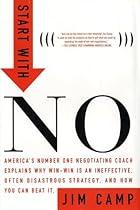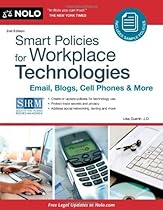Amazon.com Review
Start with No, by negotiation coach Jim Camp, is a tenaciously contrarian guide to the art and science of give-and-take that proposes a viable alternative for today's prevailing "win-win" approach. Beginning with an inverse premise--that having the right to say "no" and veto any agreement is actually the key to favorably concluding the various deals and transactions we face every day--Camp's procedure counters the common emotion-based urge to compromise ("a defeatist mind-set from the first handshake") with a series of less intuitive decision-oriented actions. "My system teaches you how to control what you can control in a negotiation," Camp writes. "When you do so, you can and will succeed (understanding that success sometimes means walking away with a polite good-bye)." Emphasizing the importance of this underlying attitude, his method combines related steps like defining a mission, understanding the adversary, assessing fiscal and emotional investments, preparing an agenda, and tracking behavior. Each is fully explained, as are associated skills such as how to structure a question to elicit a truly helpful response (e.g., "What else do you need?" vs. "Is there anything else you need?"). Despite its unorthodox manner, if diligently applied, the route that Camp details here may indeed produce winning results. --Howard Rothman
From Publishers Weekly
Negotiation coach Camp has been under the radar since 1989, helping clients reach deals at Motorola, Merrill Lynch and IBM. He now brings his advice to the general public. Asserting that the term "win-win" has become a clich‚, he suggests readers enter into every negotiation knowing that if the offer doesn't meet their expectations, they should walk away. He also advocates leaving emotions out of negotiations. "Whether we like it or not, it really is a jungle out there in the world of business, and it's crawling with predators." Camp's solid advice will help people control negotiations and prepare themselves for anything.
Copyright 2002 Cahners Business Information, Inc.
From Booklist
Claiming to be a negotiating coach and not a consultant, Camp has developed a system of negotiating that rejects the common concept of "win-win" and that urges people to get to an agreement as quickly as possible by any means, which in the author's view usually results in "win-lose." We learn that we cannot control the other party in the negotiations but can control and discipline our own actions and decisions. Concentrate not on winning but on the fundamentals of sound decision making. While his ideas are contrary to conventional negotiating wisdom, Camp counsels us to have a good, strong mission and purpose and to know the other party's real pain (why they are negotiating). Also, we learn to assess all the budgets involved, including our time and energy, money and emotional investment as well as our opponent's; to deal only with the real decision-maker; and to have a clear agenda for every contact. This is an excellent book with valuable insight. Mary Whaley
Copyright © American Library Association. All rights reserved
Customer Reviews Most helpful customer reviews
74 of 76 people found the following review helpful.
 Conventional Wisdom be damned! Bring the Contrarian.
Conventional Wisdom be damned! Bring the Contrarian.
By R. Shaff
Jim Camp is new to me but will most likely become quite a bright albeit controversial figure in management circles. Mr. Camp's new offering, START WITH NO, specifically debunks the methodology we were all taught in Negotiation 101...achieve "win-win" at all costs. Mr. Camp says NO, with a capital N, to this weak, antiquated negotiating objective.
Mr. Camp introduces his theory, "...I believe win-win is hopelessly misguided as a basis for good negotiating, in business or in your personal life or anywhere else." So begins his treatise encapsulated in contrarian thinking toward negotiations of any type. Win-win, posits Mr. Camp, is an invitation to lose. While conventional tutelage is grounded in give-and-take compromise, Mr. Camp's negotiating foundation begins with giving or taking a No. Empowering an opponent to say No is power, according to Camp.
Mr. Camp quotes the ever-popular negotiating gem, GETTING TO YES, and its basic definition of a "wise agreement." A wise agreement meets the legitimate interests of each side to the extent possible, resolves conflicting interests fairly, is durable, and takes community interests into account. Camp's theory is that compromise is implicit within this definition, perhaps explicit. His question: Why in the world compromise before you're certain you have to?
Mr. Camp offers the reader an indepth view of why saying No is beneficial to a negotiator amongst an abundance of wisdom, tactics and observations from years of negotiation coaching. In the end, Mr. Camp leaves us with "The Thirty-three Rules" of negotiating. A few of these, which fly in the face of the conventional win-win theory:
- Your job is not to be liked. Its to be respected and effective.
- Never enter a negotiation-never make a phone call-without a valid agenda.
- You do not need it. You only want it. {a very key attribute regardless the theoretical camp in which one resides}
- The value of the negotiation increase by multiples as time, energy, money, and emotion are spent.
- "No" is good, "yes" is bad, "maybe" is worse.
- "Our greatest strength is our greatest weakness (Emerson).
All this said, Mr. Camp has presented an extremely cogent view of why win-win is outdated and outmoded. However, there are always situations wherein weakness is the position in which one begins providing a gauntlet of hurdles to clear before reaching the proprietary level of success. Consequently, it is my conclusion that, while Mr. Camp's methods are unorthodox and unconventional, they can be of great assistance to a negotiator who understands that each negotiation has its own set of facts and circumstances. No single negotiation exists in a vacuum.
Commingled utilization of Mr. Camp's methodology along with emotion-neutral theories should prove valuable to the negotiating professional. A good solid read that should be part of any negotiators' library.
56 of 58 people found the following review helpful.
 A real eye-opener for anyone negotiating anything
A real eye-opener for anyone negotiating anything
By Joanna Daneman
I was VERY impressed with Jim Camp's "Start with No." In under 300 pages, the author gets his point across succinctly and powerfully; negotiations don't begin with "Yes" (which might even be a lie) or "Maybe" which is worse than useless. They begin with "No" and giving permission for the other party to say "no."
The brilliance of the "no" can be the important "way out" in a negotiation, where one party is offered a graceful exit to avoid the sense of feeling trapped or tricked. And it's also the path to finding out what they really need or really can accept. But it's much more than that.
Camp informs the reader that previous theories of negotiation such as "Win-Win" are pure bunkum; in negotiation, sometimes someone wins and someone else loses. But the long-term outcome may be quite different--what might have been compromised into a mediocre solution by win-win can often be better for both parties when one loses at the outset. Case in point; a contract is drawn up with terms that one party can no longer fulfill. It's time to renegotiate the contract despite the terms and conditions. Why? What if the contract specified that a vendor sell at a price that would drive them out of business? If the buyer NEEDS that product, they'd better negotiate rather than fail to receive the product. Going elsewhere to find it could be more costly than the re-negotiated price.
Camp's experiences are in direct contrast to some of business guru Stephen Covey's "Seven Habits of Highly Successful People", which I thought was quite interesting. To remind you, the habits are:
1- Be Proactive
2- Begin with the End in Mind
3- Put First Things First
4- Think Win/Win
5- Seek First to Understand, Then to Be Understood
6- Synergize
7- Sharpen the Saw
Mr. Camp actually has no issue with the majority of these habits, but he disagrees vehemently with two of the seven principles: #2--begin with the end in mind, and #4 Think Win/Win. In the case of negotiation, sometimes, Mr. Camp informs us, it's better not be so focused on the goal i.e, getting the lowest price, making that sales quota for that month) lest you appear needy. What's more, being too focused on your own goal might cause you to make dangerous assumptions or fail to realize the underlying situation. And Camp scoffs at the idea of win-win, giving the reader plenty of real-life examples where losing either was just that...losing, or was a neutral outcome (no win, but better than other potentially worse outcomes.)
I recommend this book to anyone getting ready to negotiate nearly anything, from extended bedtimes for your kids, to a refinanced mortgage to a multi-million dollar deal. Excellent material here from this experienced contrarian.
41 of 45 people found the following review helpful.
 Advertisements for Himself
Advertisements for Himself
By louienapoli
It's probably impossible to accurately review a book on negotiation until you've had time to try the book's ideas. Having just read it, it's difficult to say whether the techniques will be effective. That said, the book is a collection of negotiating tactics--behavior, really. Some sound very useful, e.g., "Blank slate" your mind, meaning take your focus off of the desired outcome and concentrate on the process itself. Which dovetails with another point about never letting yourself be driven by a sense of neediness, only by a detached sense of "I want it but I can live without it if the terms aren't right." The book's tone is slick. You won't find the dispassionate, thoughtful voice in books like Getting To Yes (Camp's nemesis) or Bargaining for Advantage. Camp's unwitting mentor seems to be Herb Cohen's books on negotiating, and he borrows Cohen's slick conversational style. One problem with Camp's approach is that it is his retort to "win-win" negotiating, a style Camp claims is harmful, and for which he blames Getting to Yes for introducing. But if you check Yes, you'll find that nowhere does it advocate the softheaded approach Camp ascribes to it. And whereas Yes advocates preserving the relationship with the other side if possible, Camp asserts that you cannot worry about this and must not let it be a concern. As for the title, Start With No, it never seems to be entirely clear what it means, other than a catchy slogan that seeks to position the book as an answer to Getting to Yes. Camp uses the book as a less-than-subtle advertisement for his training seminars and programs, and hints that while the book is useful, it might not impart real negotiating chops in itself--without further instruction from the master. And his website takes a hardsell approach to getting you to "register" so they can presumably harangue you to buy more material, e.g., CDs, tapes, etc. I came away from the book with the feeling that it contains less useful information than I had hoped, though it does succeed in imparting the view that the person on the other side of the table is not a colleague or "negotiating partner" but your adversary, who must not be trusted. Whether this view is useful depends, I suppose, on the players, the circumstances, etc. Start With No is an interesting addition to your negotiation library, but it doesn't really qualify as a landmark, must-have text on the subject.
http://astore.amazon.com/amazon-book-books-20/detail/0609608002



